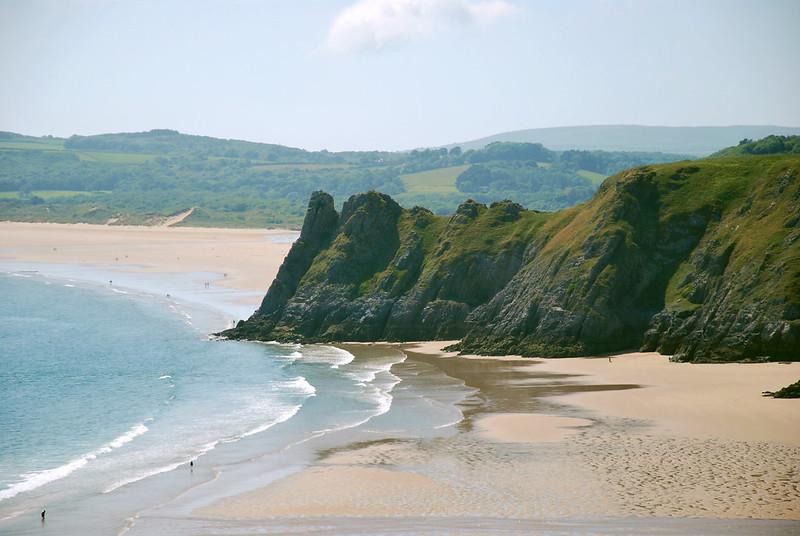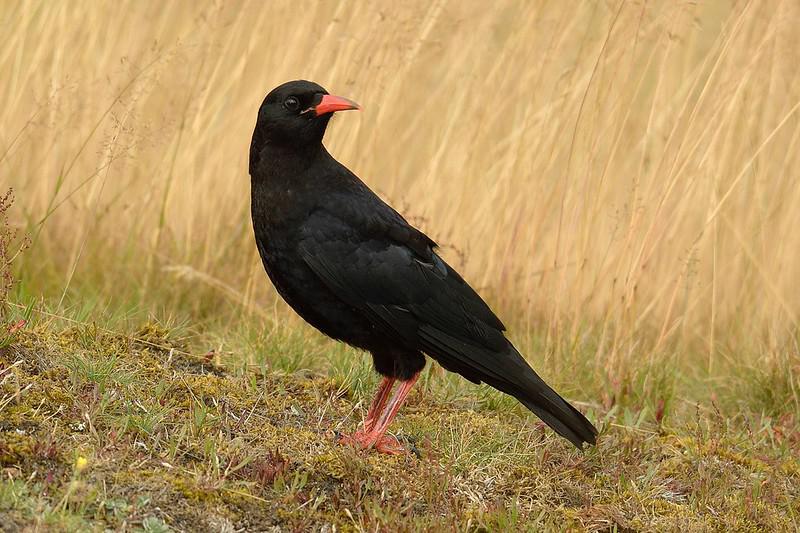Enviable Beaches
Many regions of the UK’s coast can claim to have scenic views, but one place in Wales boasts the title of being the first to be officially recognised for its beauty. The Gower Peninsula in south-west Wales sits adjacent to the coastal city of Swansea and covers about 70 square miles in total. It was designated as an Area of Outstanding Natural Beauty in 1956, becoming the first area in the British Isles to be bestowed with such a title. Its beauty has not faded in the decades since, and the Gower remains a popular tourist destination among those who enjoy outdoor pursuits.

The landscape consists of a rich patchwork of wild, open moors, impressive limestone cliffs and long, sandy beaches. Rhossili Bay, on the southwestern tip of the Gower, has been voted one of the top ten beaches in the UK for several years running. Some of the other beaches in the area are prime locations for surfers and provide some outstanding wave conditions. The entire peninsula is also great for walking, with a well-maintained coast path that winds its way between the headlands and bays. Wildlife watchers too will not be disappointed, with the diverse habitats of the Gower Peninsula supporting a great array of species. Human habitation is mostly limited to small villages and communities, which is a further boost to the local wildlife.
An Aerial Acrobat
There are many species to be found on the Gower Peninsula, but one of the more interesting examples is the Red-Billed Chough. A member of the Crow family, this bird is uncommon in the British Isles and resides in mountainous regions and coastal cliffs in the south-west of the country. Its appearance is similar to that of crows and rooks, however Choughs are quite easy to distinguish, flaunting bright red legs and a long, curved bill of the same colour. They also have a very distinctive call that often rings out across the coastal landscape.

Choughs mate for life and establish territories that they maintain throughout their lives. As a result, they will usually be seen in pairs and can often be spotted frequently on the same stretch of coastline. When this is the case it will likely be because the birds have a nest site on a nearby cliff or crevice. They will also feed in flocks occasionally, choosing to explore grassland habitats in search of insects. Choughs can be fascinating creatures to see as they are well known for their aerial exploits, engaging in wonderful displays of swooping and diving. Top tip for spotting Red-Billed Choughs on the Gower Peninsula: take advantage of the many miles of coast path and keep an eye out for the birds on clifftops and rocky headlands.
Insects and Wildflowers
The months during Spring and Summer bring swathes of colour to the Gower Peninsula as flowering plants come into season. The dunes and cliffs are characterised by their high chalk content in many places and this provides a refuge for some unique plants, including a few rarities. Over 250 flowering species have been recorded on the peninsula, and its one of the best spots to see the rare Fen Orchid, particularly in late Spring. The flowers in turn support a large variety of insects, with moths and butterflies being particular beneficiaries. Oxwich National Nature Reserve, near Swansea, holds a nationally important population of Small Blue Butterflies and many other species can be found across the peninsula.
Dragonflies are also common during the Summer months, with opportunities to see one of the UK’s rarer dragonfly species – the Hairy Dragonfly – named for its distinctive hairy thorax. With the Gower being blessed with many miles of coastline, visitors can also be assured opportunities to see seals, porpoises and the occasional pod of dolphins feeding close to shore. Birdlife is also widespread, with some of the more unusual species including Manx Shearwater, Scoters and Turnstones. The Gower Peninsula therefore caters to the interests of many, and is a great destination to see wildlife in an area of outstanding natural beauty.
